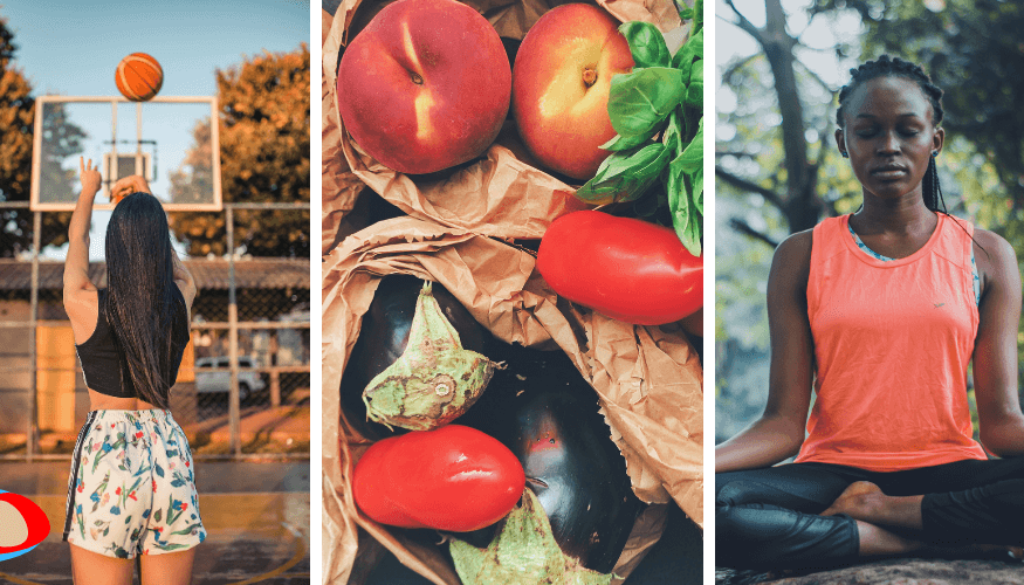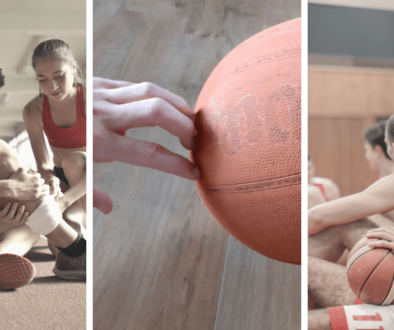Recovery for a Hectic Schedule
Back to back games and busy schedules are not ideal but they happen in basketball schedules, especially during a pandemic hit season. So if the schedule is not ideal, what can players do to help recover as best as possible for the next game.
This season has been a strange one, the pandemic has caused all sorts of chaos for basketball. Whilst for many of us the season was cancelled. For those at a higher level, the season has been able to continue but not without disruption. The strange year has resulted in delayed season, postponed games, cancelled games and tight schedules with back to back weekends.
Last week I was speaking with Dave Hall, physio for Sevenoaks Suns and GB women’s teams. The Suns schedule is very busy and they have had back to back weekends recently. They have a schedule of 12 games during April including a run of 6 games in 10 days. That is pretty tough going and so the focus really needs to be on recovery during a period like this.
RRRS for Recovery
When you look at the science and research, there appears to be common factors that are the foundation of recovery. This is what I coin Triple RS. For an athlete with a heavy schedule like the Suns players have, refuelling (R) as quickly as possible for the next training session or game is essential. Rehydrating (R) and replenishing lost fluids and electrolytes is equally important. The final R is for rest/relaxation (including breathing exercises – but RRRRBES is too complicated so didn’t add to the acronym) to wind down the nervous system and reduce stress hormones. Finally, but no means least, is sleep (S).
There are then some adjuncts to this which I will cover at the end. However, getting the RRRS steps right can help to:
- Restore muscle and liver glycogen stores
- Replace fluid and electrolytes
- Promote muscle repair
- Decrease stress hormones
- Decrease central nervous system fatigue and
- Bolster the immune system
- Recover and promote cardiovascular health
- Better performance next time out on the court
Refuel for Recovery
Refuelling is essential following a tough training session or a physical game. First of all, you can find out more about the nutritional components for recovery here. In addition to the other blog, it is important to know there are two post-exercise refuelling windows. Window one is within 30 minutes of a hard training session or game. The second window is in the two to three hours post-session/game. It is worth noting here that if the training session was short/easy or the coach limited your minutes in the game, special recovery nutrition is not as essential. Following a daily ‘whole foods’ meal plan will suffice after an easy session.
30-Minute Window
The foundations of proper recovery nutrition are carbohydrates, protein, fluids and electrolytes. As soon as you have finished the hard session or game, start replacing lost fluids and electrolytes with either a sodium-containing drink or water plus sodium-containing food.
Next up in the 30-minute window is consuming carbohydrates and protein to restore muscle glycogen and promote protein synthesis. If you want to get technical, then an athlete should consume 0.8g per kg of bodyweight of carbohydrates. For protein, 0.2g per kg of body weight should be consumed in this window. Ultimately, getting some fuel in during this window is essential.
Fluids, electrolytes, carbs and protein can be replaced with:
- Ready-made recovery drinks
- Protein shake and a banana
- Smoothies
- Real food with a side of water
Additionally, antioxidants such as vitamin C and vitamin A, probiotics and L-Glutamine can shorten recovery duration. They can be a good addition to a recovery drink or snack.
The 2 to 3-hour Recovery Window
Ideally, you should continue your recovery nutrition two to three hours post-exercise by eating a whole foods meal. Unfortunately, games or training sessions that happen late in the evening can hinder this. If this is the case, it is OK to eat earlier than this or if you are hungry. Eating earlier is fine but do not delay this post-exercise meal for more than three hours.
This meal should contain a combination of carbohydrate, about 20g of protein and some fat. Research has shown that dividing daily protein intake into four or more 20g meals has a greater stimulus on protein synthesis than two big meals with 40g protein per meal or 8 smaller meals with 10g per meal. As much as possible, aim for good quality whole foods and reduce processed foods.

Rehydrate for Recovery
As already mentioned in the refuelling section above, rehydrating should happen almost immediately. The body is mostly made of water and so replacing the lost fluid is essential for the body to function. Fluids help to regulate body temperature, blood pressure and transport energy and nutrients throughout the body.
A fluid deficit of as little as 2 percent of bodyweight can compromise cognitive function. A 3-5 percent deficit can impair sport-specific technical skills and anaerobic output. Over 6 percent bodyweight dehydration can impact cardiac output, sweat production and blood flow to muscles. All of these functions are pretty important for basketball and performance, making hydration essential not just for a hectic schedule.
A simple ‘weigh in’ and ‘weigh out’ strategy can help to personalise hydration. This is where you weigh yourself before training or game and then again after. In general, a loss of 1kg bodyweight represents approximately 1 litre (2 pints) of fluid loss. Hydrating to thirst during training or game will be useful, then consume roughly 1.25-1.5 litres for every kg of bodyweight lost after exercise. However, probably best not to drink it too quickly as you will be regularly visiting the toilet. Start by sipping cool water after the game and increase for the few hours following.
Cooling or Ice for Recovery
I am going to step away from the RRRS acronym for a second as cooling and hydration can crossover. With dehydration and balling hard, body temperature can rise. Especially after a training session on a hot day (not that we have many of those in the UK). Consuming cool fluids immediately can cool your body down if your core temp feels hot. Sitting in cool water or using ice can also be helpful to halt continued dehydration and increase your appetite.
Now the research for cooling and ice is pretty poor when it comes to things like reducing inflammation. Even the guy who came up with the RICE principle has come out and said he got it wrong. However, it can help with reducing pain and easing soreness. So, with a schedule like the Suns have with back to back games, icing joints or sitting in cool water may have some benefits.
On the flip side of this and as long as the body has cooled and rehydrated. A hot bath with muscle soaks or Epsom salts is great for reducing muscle tension and getting some relaxation. This might not be ideal with a quick turnaround of games but this is my preferred option on a recovery day. I mean, who wants to sit in an ice bath on their day off?
Rest and relaxation
Back to the acronym! During the highs and lows of a basketball game, stress hormones such as cortisol and adrenaline can run high. A busy game schedule and in addition a busy life is bound to raise stress levels. Therefore, rest and relaxation should be a part of the recovery plan. You can read more about the different types of rest in our previous blog. I often recommend breathing exercises as they are a quick and easy way to get the ‘rest and digest’ part of the nervous system working.
A common mistake many athletes make is to use their rest days to do endless household tasks and their recovery weeks to tackle bigger projects. On your rest days and recovery weeks, plan downtime, put your feet up, listen to music, watch a funny film or do another hobby/craft. Rest is an important part of the programme!
Sleep
Studies have shown that increasing the duration of sleep leads to increased performance and mental well-being in basketballers. In fact, extending sleep has been shown to increase speed and increase free-throw and 3pt percentages. Sleep is a pretty powerful tool all around. We also know chronic sleep debt impairs performance and reduces motivation to excel.
Recommendations for adult athletes are 8 to 10 hours per night plus a 30-minute nap between 2 to 4 PM. Junior athletes require over 9 hours per night plus a 30-minute nap in the afternoon.
In addition to sleep duration, sleep quality also affects the regenerative qualities of sleep. Sleep quality can be improved by reducing disturbances by wearing earplugs/eye masks and sleeping in a cool, dark room. Following a pre-sleep routine of relaxing activities, avoiding stimulants such as caffeine after noon and alcohol in the evening increases both your sleep quality and duration.
Games and training late in the day can make sleep elusive for some ballers. Athletes losing sleep after these evening sessions (where possible) are advised to switch their intense training sessions to the morning. Evening hours are better spent on lower intensity activities such as yoga, mobility, and maybe even a relaxing massage. I recognise that most sessions and games in the UK usually occur in the evening due to venue availability and the likes, so this is where naps may come in handy.

Additional Recovery Strategies for a Hectic Schedule
After you have taken care of the big RRRS strategies, there are many additional recovery techniques you could add to your routine:
- Massage guns and foam rollers can help with tension
- Compression wear
- Active recoveries such as yoga or walking meditation
- Hydrotherapy (bobbing around in a hot pool)
- Sauna
- Supplements such as tart cherry juice
However, remember that stress reduction is one of the more important recovery techniques. Trying to add too many additional recovery techniques on top of an already busy schedule may add stress and be counterproductive.
Select a few accessory recovery techniques you enjoy and have easy access to, rather than trying to cram them all in. It is also not a good idea to trade one of the RRRS for one of the additional strategies.
Example of a Recovery Routine
Following a game or hard training session, this is an example of a good recovery routine
- Finish game or hard training and grab a recovery drink to sip during your cool down (maybe even a tart cherry juice too)
- Take a 10-minute ice-bath or cold water soak
- Clean up and shower
- 10-minute mobility session and/or breathing exercises/relaxation
- Compression leggings or shorts and socks
- Meal with 20g protein and a combination of carbohydrate and fat within a 3-hour window
- Additional breathing exercises/relaxation (can’t get too much breathing in)
- 30-minute nap (if early game/training)
- Ensure 8 hours plus of good quality sleep
Final notes
Many of these strategies are the foundations of recovering well during any part of the season, following training and games. However, they are more important during a busy schedule and when you have back to back games. Simply remember to eat well, hydrate well, relax and sleep well!
Remember, these resources should not replace diagnosis and management from a medical professional. Always check before you follow the guidance.




